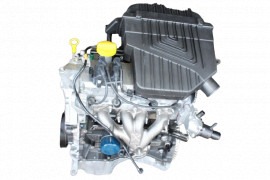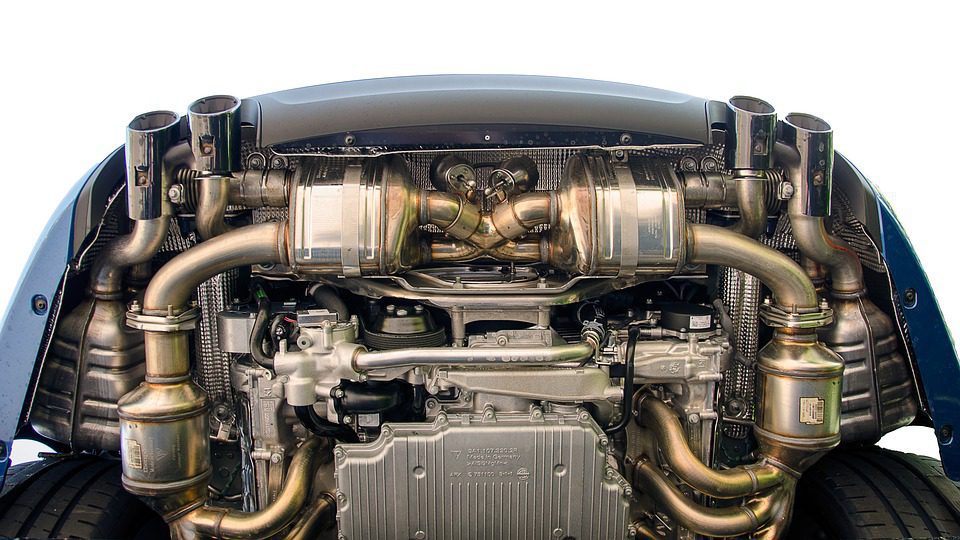Opel Corsa Engine: Efficiency and Dependability for Your Car
Exploring the Inner Workings of a Compact Lorry's Engine System
As motorists, we often take for approved the intricate procedures that happen within the boundaries of our lorry's engine system. In this exploration of a small vehicle's engine system, we will unravel the inner operations of this mechanical symphony, dropping light on the enigmas that drive us forward on our everyday trips.
Burning Process Review
The combustion process in a small lorry's engine system is an important device that efficiently transforms gas into energy to power the automobile. This procedure takes place within the combustion chamber of the engine, where fuel and air mix, spark, and generate regulated explosions. The burning procedure contains 4 main phases: intake, power, exhaust, and compression.
Throughout the intake phase, the piston moves downward, reeling in a blend of air and fuel right into the combustion chamber. The following stage, compression, includes the piston relocating up, pressing the air-fuel blend to increase its effectiveness. Subsequently, in the power phase, the ignition system sparks the compressed mix, causing a rapid development of gases that compels the piston back down. This descending motion creates the power needed to drive the lorry. Lastly, in the exhaust phase, the burned gases are gotten rid of from the burning chamber through the exhaust shutoff, preparing the chamber for the following cycle. This cyclic burning process is essential to the procedure of a small lorry's engine system, making sure reliable energy conversion for propulsion.
Piston and Cylinder Interaction

The piston's precise fit within the cylinder is important for preserving optimal compression and avoiding energy loss during burning. Limited clearances between the piston and cyndrical tube wall surfaces make certain efficient securing, permitting the piston to relocate efficiently without permitting gases to leak past. Proper lubrication is additionally vital to decrease friction and wear in between these parts, boosting long life and efficiency.
Moreover, the style and materials made use of in making the piston and cyndrical tube effect engine effectiveness and toughness. Modern engines typically utilize lightweight yet sturdy products like aluminum alloys for pistons and cylinder linings to minimize inertia and improve thermal efficiency. Overall, the unified interaction in between the piston and cyndrical tube is fundamental to the engine's functionality and total performance.
Fuel Shot System Functionality
Gas injection systems in compact automobile engines play an important role in precisely delivering gas to the combustion chamber for reliable and controlled ignition. The gas injection system works by infusing fuel right into the combustion chamber at the ideal minute during the engine's procedure (opel corsa engine). This accurate timing makes certain that the fuel blends evenly with the air for appropriate combustion, leading to enhanced gas efficiency and lowered discharges
There are mainly 2 sorts of gas shot systems used in small lorry engines: port fuel injection (PFI) and straight fuel shot (DFI) PFI systems infuse fuel right into the intake port before the consumption shutoff, while DFI systems infuse fuel directly right into the burning get more chamber. Both systems have their benefits, with DFI using better fuel atomization and PFI supplying a much more cost-effective service.
Understanding Engine Air Conditioning Devices
Effective procedure of a portable automobile's engine counts heavily on the performance of its cooling systems. Engine air conditioning is necessary to stop getting too hot, which can bring about major damage and reduced efficiency. The air conditioning system in a compact car commonly contains several components collaborating to manage the engine temperature. One critical component is the radiator, which click for more uses coolant to absorb heat from the engine. As the hot coolant flows through the radiator, it releases warmth into the air, cooling off before returning to the engine. The water pump circulates the coolant through the engine and radiator, making sure a constant flow to control temperature. In addition, the thermostat helps control the coolant flow to maintain optimum engine temperature. Some vehicles also have cooling fans that activate when additional cooling is needed, such as throughout hefty traffic or warm climate. Recognizing these engine air conditioning devices is crucial for preserving the performance and longevity of a portable lorry's engine system.

Exhaust System Elements Explained
The ideal functioning of a small car's engine air conditioning devices depends upon a corresponding system referred to as the exhaust system, which consists of different essential parts for making sure efficient exhausts and engine performance. The exhaust system consists of elements such as the exhaust manifold, catalytic converter, muffler, and tailpipe. The exhaust manifold gathers exhaust gases from the engine's cylinders and paths them to the catalytic converter. The catalytic converter after that transforms damaging toxins in the exhaust into much less damaging exhausts before launching them with the muffler and tailpipe.
One crucial element of the exhaust system is the oxygen sensing unit, which monitors the oxygen levels in the exhaust gases to aid regulate fuel usage and guarantee optimum engine performance. opel corsa engine. Additionally, the resonator might be existing in some exhaust systems to reduce sound degrees. Overall, the exhaust system plays an important function in maintaining engine effectiveness, lowering hazardous discharges, and making certain a quieter driving experience for portable vehicle owners

Verdict
Finally, the small automobile's engine system is a complex combination of components that work with each other to promote the burning process, transform fuel into energy, and get rid of waste gases. Recognizing the internal workings of the engine system, including the piston and cylinder communication, fuel injection system, engine cooling mechanisms, and exhaust system components, is important for preserving optimum efficiency and performance of the lorry.
The burning process in a compact vehicle's engine system is an important system that effectively transforms fuel into energy to power the vehicle.Fuel injection systems in compact vehicle engines play a crucial role in precisely delivering gas to the burning chamber for regulated and efficient ignition.There are mostly 2 types of fuel shot systems made use of in small automobile engines: port fuel injection (PFI) and direct gas shot (DFI) Comprehending these engine cooling mechanisms is vital for keeping the efficiency and durability of a compact vehicle's engine system.
The optimal performance of a Discover More small car's engine cooling devices depends on a complementary system known as the exhaust system, which consists of different vital elements for guaranteeing efficient exhausts and engine performance.